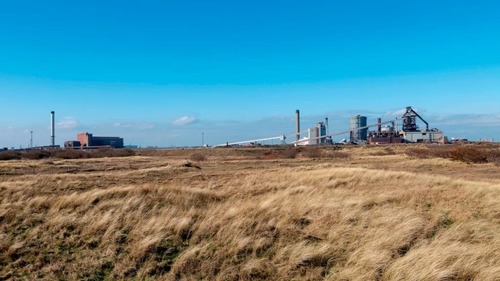
Johnson Matthey and bp have signed an agreement for the use of Johnson Matthey's LCH technology at bp's proposed low carbon hydrogen facility in Teesside, H2Teesside. The facility aims to be one of the UK's largest low carbon hydrogen facilities and targets 1.2GW of hydrogen production by 2030. The selection of Johnson Matthey's technology marks a significant milestone for the H2Teesside project. The LCH technology offers the lowest natural gas usage and can capture up to 99% of carbon dioxide produced, making it the most carbon efficient technology available for low carbon hydrogen production.
- Johnson Matthey’s LCH™ technology selected for bp’s H2Teesside project, which at aims to be one of the UK’s largest low carbon (blue) hydrogen facilities.
- H2Teesside targets 1.2GW of hydrogen production by 2030 – over 10% of the UK Government’s hydrogen target of 10GW by 2030.
- The selection marks a significant milestone for bp’s H2Teesside project as it continues its development and commences its detailed design.
- The licence is the 8th sustainable technologies project contributing to JM’s milestone of winning more than ten additional large-scale projects across Catalyst Technologies and Hydrogen Technologies by end of 2023/24.
Johnson Matthey (JM), a global leader in sustainable technologies, and bp have signed a licensing and engineering agreement for Johnson Matthey’s LCH technology at bp’s proposed flagship low carbon (blue) hydrogen facility in Teesside, H2Teesside.
Industry in the Tees Valley accounts for 64% of total local CO₂ emissions, compared to 24% nationally [1]. H2Teesside would help power and decarbonise local industry here, as well as new businesses attracted to this low carbon hydrogen produced at scale.
Due to its proximity to domestically sourced North Sea natural gas, established pipe corridors, and planned carbon capture transportation and storage infrastructure that is being developed by the bp-led Northern Endurance Partnership, the area is uniquely placed for H2Teesside to help lead a low carbon transformation, supporting jobs, regeneration, and the revitalisation of the surrounding area.
H2Teesside will use JM’s innovative LCH technology, which couples a gas-heated reformer with an autothermal reformer (GHR-ATR). LCH offers the lowest natural gas usage commercially available today and can capture up to 99% of carbon dioxide produced. This means for H2Teesside it would deliver the lowest levelised cost of hydrogen (LCOH) and the most carbon efficient technology available today for low carbon (blue) hydrogen production.
H2Teesside, alongside NZT Power and BOC Teesside Hydrogen, was selected by the UK Government as Track-1 Capture Projects to proceed to negotiations for government funding from the Department for Energy Security & Net Zero (DESNZ), for the East Coast Cluster as part of Phase 2 of the cluster sequencing process for CCUS.
Alberto Giovanzana, Managing Director – CT Licensing at Johnson Matthey, said: “bp’s H2Teesside project will be at the forefront of the UK’s efforts to decarbonise, and we’re proud JM’s innovative LCH technology will be at the heart of it. We championed the use of low carbon (blue) hydrogen as a part of our efforts to achieve net zero emissions and have proven ourselves as a trusted partner with this licence representing our fifth major LCH project globally.”
Will Harrison-Cripps, H2Teesside Asset Development Lead at bp, said: “H2Teesside, which aims to be one of the first low carbon hydrogen production facilities in the UK, is a key part of our plans to help Teesside transform into the UK’s leading hydrogen hub, providing a diverse range of customers with low carbon hydrogen produced at scale. We are pleased to be working with Johnson Matthey, using their innovative technology to accelerate the pace of hydrogen deployment as we work towards commercial operations in 2028 and supporting the East Coast Cluster decarbonise a range of industries in Teesside.”
[1] Tees Valley Net Zero Cluster Plan Key Findings, Tees Valley Net Zero Project Board